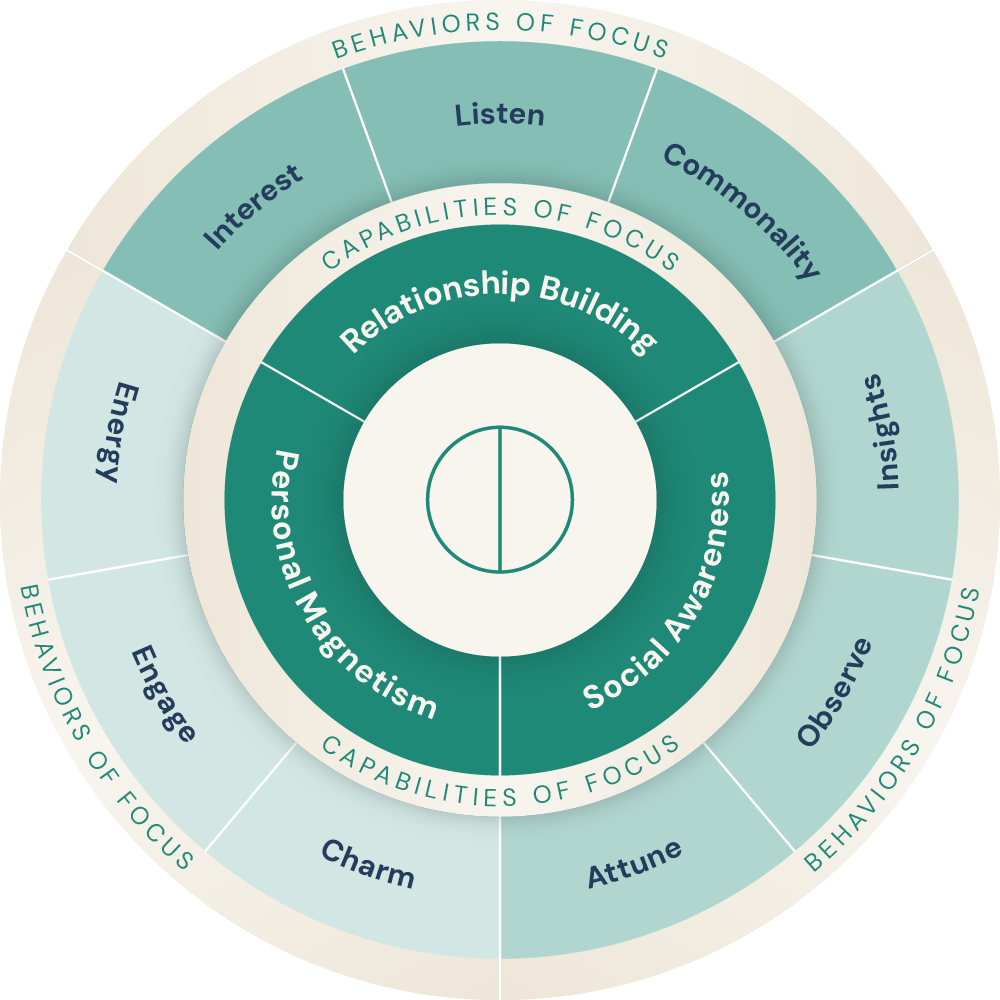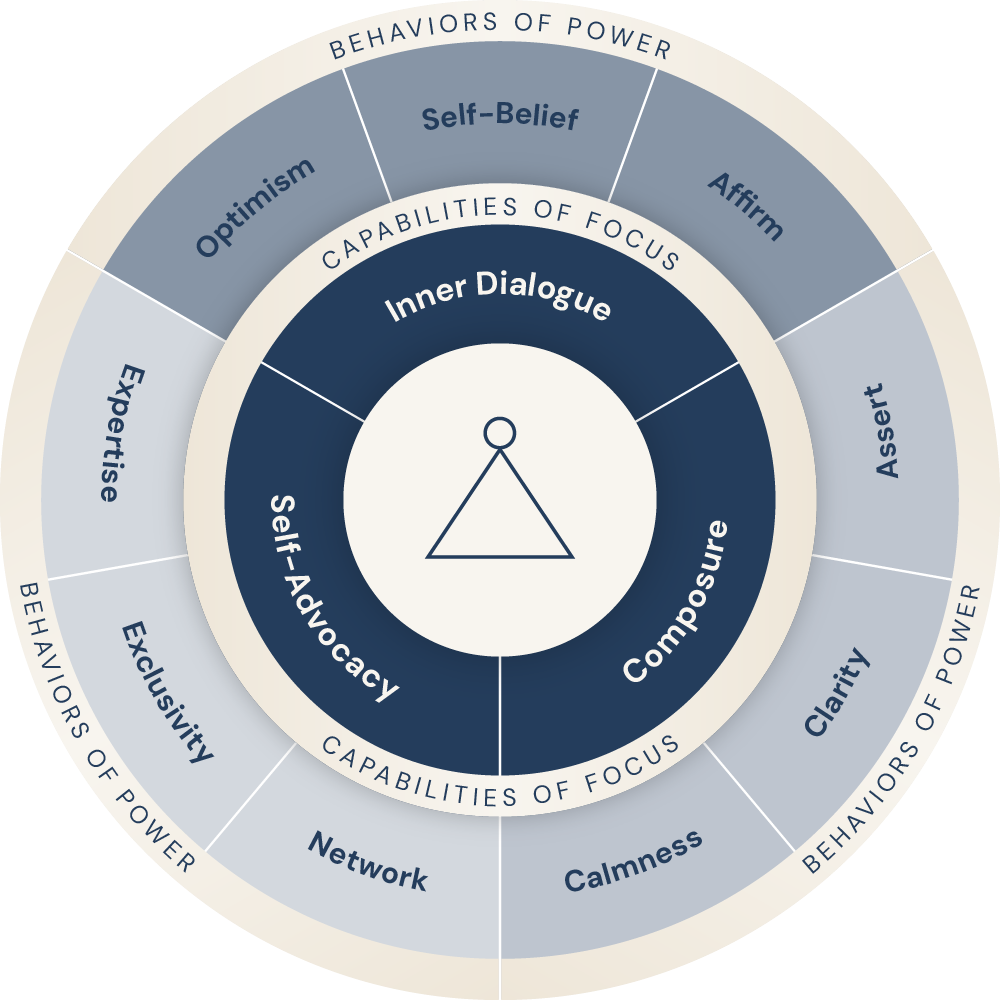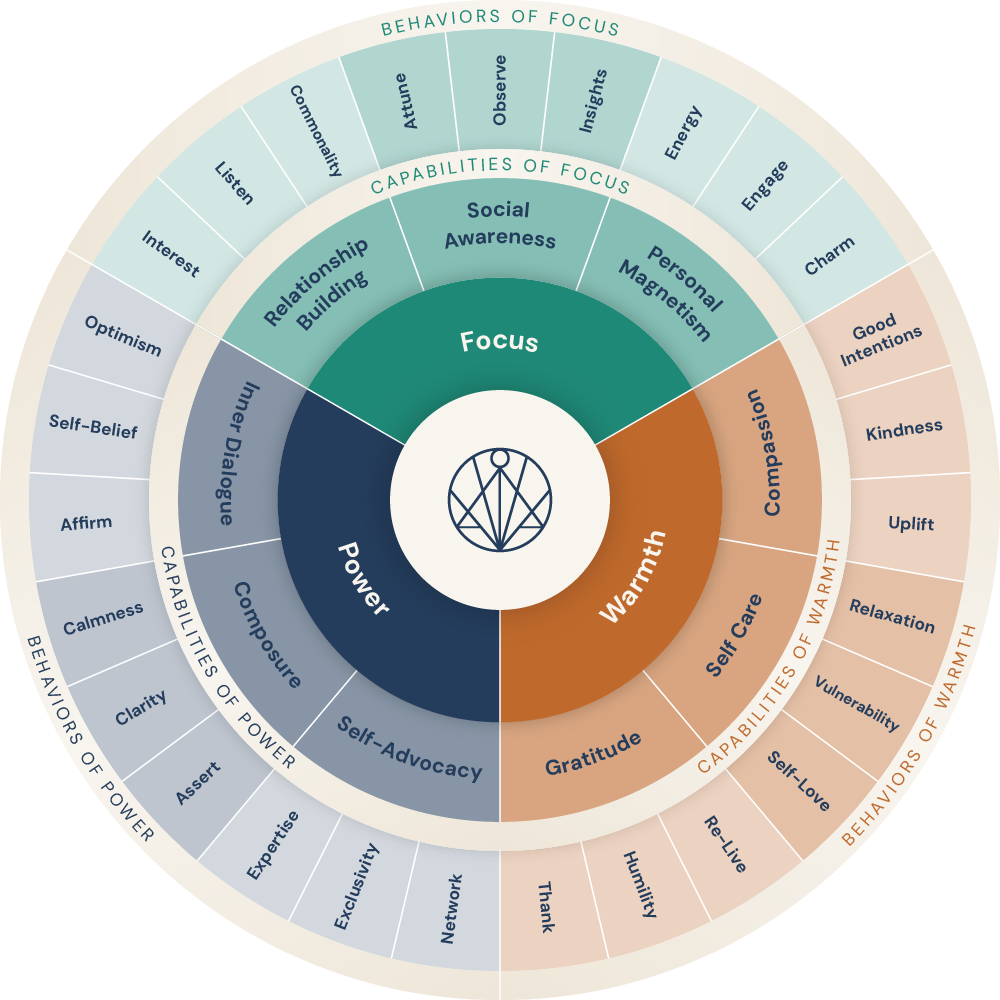What Is Executive Presence?
Technical expertise gets you hired. Executive presence gets you promoted, retained, and trusted with critical decisions.
Stakeholders make decisions based on three fundamental questions:
Do they want to work with you?
Do they trust that you care about their success?
Do they believe that you can deliver results?
Without executive presence, you're asking people to follow recommendations from someone they don't particularly like, don't fully trust, or aren't confident can execute
Executive presence is a learnable quality of adapting your leadership style to build collaboration, trust, and credibility to influence stakeholder decisions. It's the difference between being perceived as a technical contributor and being valued as a trusted advisor.
Through our research with senior leaders in Fortune 500 companies and client-facing professionals across tech, finance, and philanthropy, we've identified three leadership styles that create executive presence: Focus, Warmth, and Power.
These styles work together to produce specific outcomes that compound your influence.
Focus: Likability that invites collaboration
Focus is about directing your attention strategically. The core principle is simple: where you place your attention determines how much people like you. When stakeholders like you, they want to collaborate with you.
Most professionals enter interactions asking "What do I need to accomplish?" Focus flips this to "What do my stakeholders truly need from this interaction?" This shift from self-focused to stakeholder-focused creates the foundation for all influence.
Developing Your Focus
To develop Focus, strengthen behaviors in three core capabilities: Relationship Building, Social Awareness, and Personal Magnetism.
Relationship Building means cultivating meaningful professional bonds by learning what drives stakeholders and finding shared ground to work together successfully. Move beyond surface-level interactions to create lasting connections through genuine interest, active listening, and finding commonality.
Social Awareness involves reading how stakeholders communicate and respond so you can adjust your approach and connect more effectively. Give others your genuine attention and adapt to their needs instead of expecting them to bend to you.
Personal Magnetism is making interactions memorable and drawing in stakeholders so they look forward to working with you. Transform routine meetings into memorable exchanges that add value to their day.
In practice
A program officer might begin by understanding what success looks like for the grantee and what obstacles they're facing, rather than immediately explaining grant requirements.
Warmth: Trust that builds loyalty
Warmth demonstrates genuine care for stakeholder success. While Focus gets people to like you, Warmth makes them trust you. The core of Warmth is showing stakeholders that you're invested in their outcomes, not just your own agenda.
Trust transforms transactional relationships into strategic partnerships. When stakeholders trust that you care about their success, they share real constraints, surface hidden concerns, and commit to difficult changes.
Warmth produces trust, which creates loyalty. Loyal stakeholders not only choose to work with you again and again – they also refer others to you.
Growing Your Warmth
Gratitude means appreciating the goodness around you to give both yourself and stakeholders a reason to stay committed to you and your work. Go beyond simple "thank you"s to shift focus from what's missing to what's working and valuable.
Self-Care involves engaging in practices that help you manage your personal energy so you can sustain your performance and pay attention to others. Proactively save and replenish your energy so you can be present when others need you most.
Compassion is supporting others through their challenges and helping them reach their potential, leading to better outcomes for everyone. Create a positive cycle of support that encourages stakeholders to become more capable and collaborative.
In practice
A partnership success manager might invest time understanding client team dynamics, celebrating wins, and providing support during challenging implementations, rather than only tracking client metrics.
Power: Credibility that inspires decision-making
Power is about internal comfort that allows you to inspire stakeholders to make decisions based on your recommendations. Power leads them to accept your credibility because you consistently show up with a perspective when needed.
Power doesn't mean being the smartest or loudest person in the room. It means providing clear direction when stakeholders face complex decisions. But here's the key insight: when you are comfortable, others perceive you as confident.
Building Your Power
Inner Dialogue is developing self-talk that shapes how you think and feel, so you're willing to step forward and lead. Develop a dialogue with yourself to increase confidence and feel more prepared to tackle challenges and seize opportunities.
Composure means staying in control of your reactions to express thoughts with clarity and make decisions that drive results. Manage emotions in high-pressure situations to express your point of view while respecting others.
Self-Advocacy involves articulating your contributions to enhance visibility, strengthen your reputation, and unlock strategic opportunities. Instead of hoping what you do well is noticed, strategically position yourself for recognition and advancement.
In practice
A project manager facing scope creep might calmly present options, clearly outline consequences, and confidently recommend a path forward, rather than simply escalating the issue.
The Sequence Matters
These styles build on each other. Stakeholders need to like you before they'll trust you, and they need to trust you before they'll follow your recommendations.
Skip Focus and jump to Power, and you'll be seen as arrogant. Lead with Warmth before establishing Focus, and you'll be seen as nice but ineffective.
Executive presence isn't about changing your personality. It's about strategically adapting your approach to what stakeholders need. A program officer might use high Focus during discovery calls, emphasize Warmth during challenging implementation phases, and leverage Power when grantees need decisive guidance.






